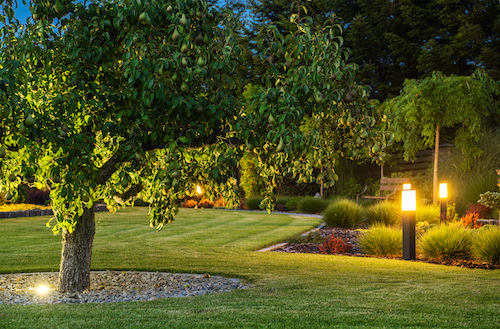Illuminating the Outdoors: A Comprehensive Guide to Outdoor Lighting for Gardens

Outdoor lighting can transform a garden into a magical and inviting space, enhancing its beauty and functionality. Whether you want to create a cozy ambiance for evening gatherings or illuminate specific features, understanding the different types of outdoor lighting options available is essential. In this guide, we’ll explore various outdoor lighting techniques and fixtures that can elevate your garden’s aesthetic appeal while providing practical illumination.
- Path Lighting: Path lighting serves both a functional and decorative purpose. It helps guide visitors along walkways, ensuring safety and preventing accidents. Path lights are typically low-voltage fixtures placed along pathways, driveways, or stairs. They come in various designs, including lantern-style, bollard lights, or stake lights, which can complement the overall garden theme.
- Accent Lighting: Accent lighting is used to highlight specific features or focal points within the garden. This technique adds depth, drama, and visual interest to your outdoor space. Spotlights or well lights can be strategically placed to illuminate trees, statues, water features, or architectural elements. Adjustable fixtures with different beam angles allow you to control the direction and intensity of the light.
- Deck and Patio Lighting: To extend the usable hours of your outdoor living areas, consider installing deck and patio lighting. This ensures a warm and inviting atmosphere for nighttime gatherings. Recessed deck lights, step lights, or rail lights can be integrated into the structure, providing subtle illumination while preventing glare. String lights or lanterns can also be hung overhead to create a cozy ambiance.
- Security Lighting: Security lighting helps deter potential intruders and ensures the safety of your garden and home. Motion sensor lights can be strategically placed near entry points, driveways, or dark corners. These lights automatically turn on when motion is detected, providing a sense of security while conserving energy. Floodlights with adjustable motion sensors are ideal for larger outdoor areas.
- Landscape Lighting: Landscape lighting focuses on illuminating the overall landscape design, including plants, shrubs, and flower beds. Well-placed uplights or downlights can create beautiful silhouettes and shadows, adding depth and texture to your garden. Silhouette lighting, moonlighting (placing lights high in trees to mimic the effect of moonlight), or grazing (highlighting textured surfaces) are popular techniques for landscape lighting.
- Solar-Powered Lighting: For an eco-friendly and cost-effective lighting solution, consider solar-powered lights. These lights harness energy from the sun during the day and automatically illuminate your garden at night. Solar-powered path lights, stake lights, or string lights are easy to install and require minimal maintenance. However, it’s important to position them in areas that receive ample sunlight for optimal charging.
Conclusion: Outdoor lighting is a powerful tool that can transform your garden into a captivating and functional space. By combining various lighting techniques such as path lighting, accent lighting, deck and patio lighting, security lighting, landscape lighting, and solar-powered lighting, you can create a personalized and enchanting outdoor ambiance. Remember to consider the specific needs of your garden, such as safety, aesthetics, and energy efficiency, when selecting the appropriate lighting fixtures and techniques. With the right lighting, your garden will become a mesmerizing oasis that can be enjoyed day and night.
